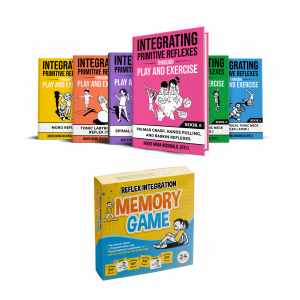Shopping Cart
View Cart-
×
 Six Book + Memory Game Bundle
Six Book + Memory Game Bundle
- Includes:
Reflex Integration Memory Game × 1
An Interactive Guide to the Moro Reflex × 1
An Interactive Guide to the Asymmetrical Tonic Neck Reflex (ATNR) × 1
An Interactive Guide to the Symmetrical Tonic Neck Reflex (STNR) × 1
An Interactive Guide to the Tonic Labyrinthine Reflex (TLR) × 1
An Interactive Guide to the Spinal Galant Reflex × 1
An Interactive Guide to the Palmar Grasp, Hands Pulling, and Babkin Reflexes × 1
Subtotal: $134.00
Shopping Cart
View Cart-
×
 Six Book + Memory Game Bundle
Six Book + Memory Game Bundle
- Includes:
Reflex Integration Memory Game × 1
An Interactive Guide to the Moro Reflex × 1
An Interactive Guide to the Asymmetrical Tonic Neck Reflex (ATNR) × 1
An Interactive Guide to the Symmetrical Tonic Neck Reflex (STNR) × 1
An Interactive Guide to the Tonic Labyrinthine Reflex (TLR) × 1
An Interactive Guide to the Spinal Galant Reflex × 1
An Interactive Guide to the Palmar Grasp, Hands Pulling, and Babkin Reflexes × 1
Subtotal: $134.00
